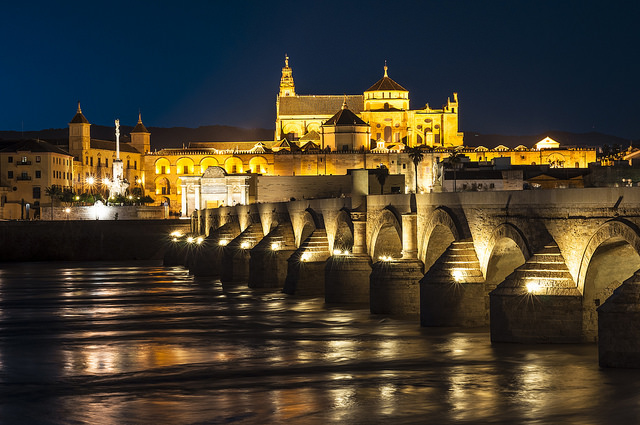In the year 750, during the Christian era, a young prince called Omeya managed to escape from the massacre of his entire family at the hands of the Abasíes, and after heading for the north of Africa, in an extraordinary journey of fleeing his persecutors, he arrived five years later at the Muslim territories of the ancient Roman Iberia – recently renamed Al-Andalus, in the beautiful Arabic language.

His name was Abd-al- Rahman, and he was the grandson of the last Omeya, making him in some way the most noble of the Arabs, the last descendant of the fighters who had been companions to the Prophet himself, now that his family had been appointed into another dynasty, making a break with the past – having abandoned the splendid city of Damascus, moving from the capital of Islam to Baghdad, a formidable and brilliant new city on the banks of the Tigris.
Abd-al- Rahman was also Berber, from his Mother´s side, which permitted him to campaign politically in Al-Andalus, and win the trust of both the Syrians, and the Berbers there, in order to become the new governor of the province, and be finally recognised as an emir by the abasíes – satisfied with having him duty bound to them politically – during this time, the presence and influence of the Abasi extended to the remotest China.
In the lands of Al-Andalus, far from his beloved Damascus, Abd-al- Rahman devoted the best part of his life to the construction of a series of palaces, gardens, and temples (the quibla in the Cordoba mosque is not pointed towards Mecca, but is just how it would appear if it was in Damascus) – as a way of recreating in some way his lost paradise. He even reconstructed a whole new Rusafa, the city taken by the Omayas, on the outskirts of Cordoba. It was there, in the botanical gardens that he, feeling his death drawing near, that he wrote a beautiful poem onto a palm tree, moved by the exiled condition which united them – both being so far, with no possibility of return to their natural environments. (“You are also, oh palm, on his foreign ground…”)
Surrounded by palm trees like those found at the time of Abd-al- Rahman, is the Egyptian temple of Debod, transplanted to Madrid in 1968 like a rare flower from another land, as a form of compensation for the collaboration lent by the Spanish government in the salvaging of the Nubia temples, which had been in danger of destruction with the building of the Asuán valley.
?
 Paul Oilzum
Paul Oilzum
Dedicated to Isis, and more than 2000 years old, it is the biggest, best preserved temple to be found outside Egypt. If you visit it whilst renting Madrid accommodation you´ll discover there is nothing in the city quite like it.

 English
English Translated by: Poppy
Translated by: Poppy
